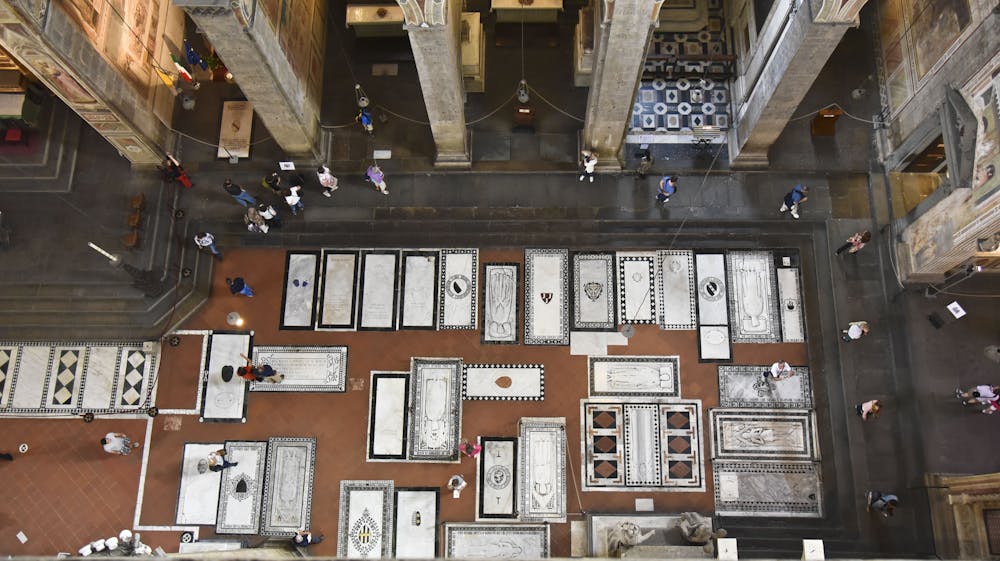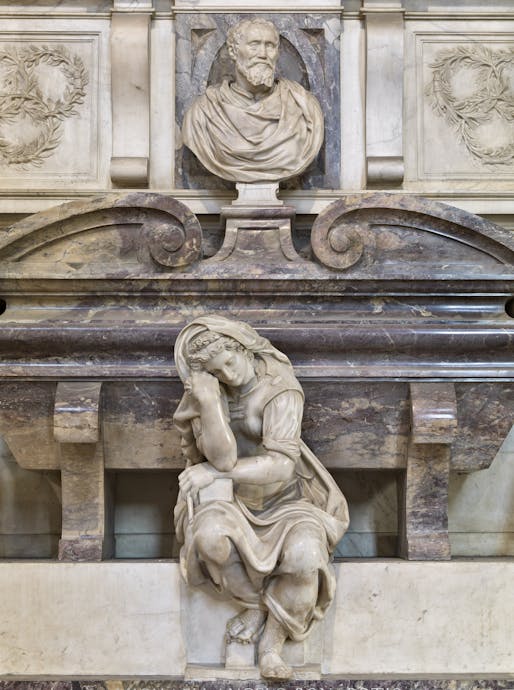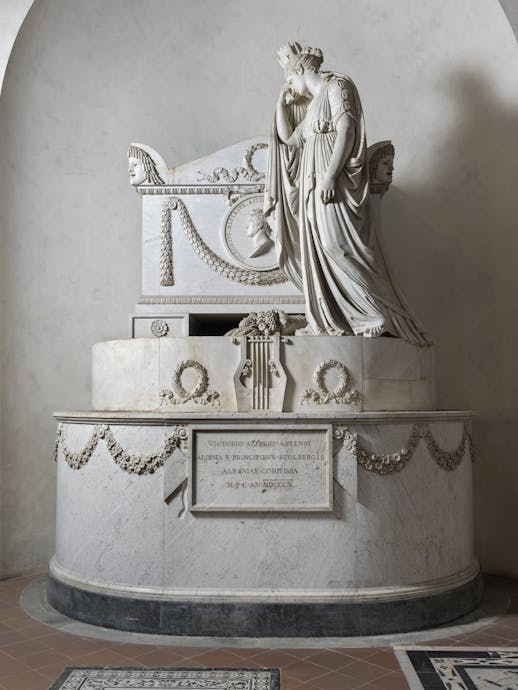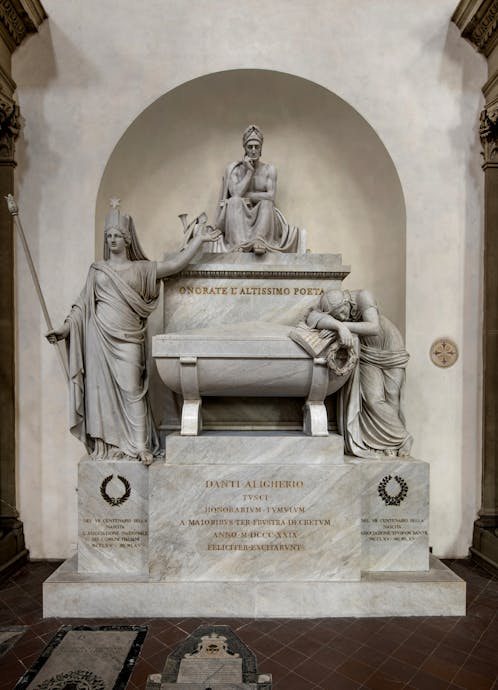
Grand Tombs and Memorials
A unique heritage of history, faith and art
Tomb slabs
Santa Croce's floor with its earthenware tiles still hosts roughly two hundred and fifty graves, an astonishing legacy of history, faith and art. Cemeteries as we know them today did not exist in the Middle Ages, so in order to meet the need of the faithful to be buried in consecrated ground, their bodies were laid in free spaces within churches and convents, where only a few could afford a gravestone to perpetuate their memory.
The graves in Santa Croce were initially reserved for Franciscan friars who had held important offices in the Order and for laymen who had devoted their lives to the service of the city. Later on, however, an increasing number of members of the neighbourhood's wealthy and powerful families whose donations had made it possible to build and decorate the complex also came to be buried there.

Tomb slabs on the floor of the Basilica
Devotion and humility marks
Their tomb slabs conjugate a desire to mark their place of burial with the wish to appear humble in keeping with the ideals of the mendicant orders, which is why they deliberately allowed their graves to be trodden on and at the same time sought to symbolise the return to the earth that is the fate of all men. The graves can be iconic (in other words with a figure of the deceased in virtually life-size bas-relief on it, generally facing the altar) or aniconic and adorned only with ornamental motifs and coats-of-arms. Chiusini , or manhole covers, were the simplest form of grave, consisting of a relatively small and often unadorned slab that could be opened to permit access to the burial below.
Monumental tombs
In the 15th century Leonardo Bruni and Carlo Marsuppini, two distinguished literary figures who made a name for themselves as Chancellors of the Florentine Republic, were buried in the church. In view of their unquestioned merit, the Signoria decided to bear the cost of their magnificent monumental tombs, which marked Santa Croce's transition to the role of guardian of Florence's public glories.
Florentine illustrious figures
The tradition of using the church to honour the great and good was revived by Cosimo de' Medici when he commissioned a tomb for Michelangelo in 1564, thus laying the groundwork for the Grand Duchy of Tuscany's cultural policy based on using funerary monuments in Santa Croce to celebrate the genius and talent responsible for Florence's greatness. The tombs and memorials to illustrious figures include that of Galileo Galilei, who died in 1642. His funerary monument, commissioned by his pupil Vincenzo Viviani, had a complex gestational history that was only resolved in 1737; and indeed the same is true of Niccolò Machiavelli, who died in 1527 but who was not celebrated with a monumental tomb until 1787.

Models of virtue
These memorials in the church, designed to extol civic merit, resonate with the images and stories of saints proposed by the Franciscans in their altarpieces, fresco cycles and sculptures as models of virtue in which everyone can seek inspiration. Thus religious and secular identity here coexist and are interwoven in a unique dialogue.
Pantheon of the Italian nation
The chief players in this legacy include the poet Ugo Foscolo, who considered that the "cult of the tomb" performed a valuable educational role as a founding element of civilisation on the grounds that it was capable of forging a shared, collective memory.
This is the concept on which he built the poem Dei Sepolcri , in which he meditates on the tombs of the great and good in Santa Croce. Published in 1807, the poem reached a very broad audience thanks to its translation into English and French, and it inspired other poets such as Lord Byron, thus helping to spread Foscolo's reputation. This was the moment when a crucial change occurred in people's perception of Santa Croce, which was transformed from the city's Pantheon into the Pantheon of the Italian nation as a whole. A key role in this process was played by the monument to the poet and playwright Vittorio Alfieri, carved by Antonio Canova.

The 19th century was also the century in which Italy was hammered into a single nation state after it had been split into a myriad different political entities for many centuries. In this phase of history known as the Risorgimento, the church became one of the chief venues for reaffirming the Italian identity, as we can see from the imposing cenotaph – a monumental tomb without the body of the deceased in it – inaugurated in 1830 to commemorate the father of the Italian language: the Florentine poet Dante Alighieri, who died in Ravenna almost five hundred years earlier and whose mortal remains are still buried in that city.

International Memories
The mortal remains of Ugo Foscolo were brought to Santa Croce from England in 1871, and they were soon followed by the mortal remains of the composer Gioachino Rossini.
Great Italian figures are not the only people celebrated in Santa Croce, however, because the complex's international reputation also prompted wealthy and prestigious foreign families residing in Florence – chiefly of French, English, Polish and Russian extraction – to commission tombs and memorials for their own illustrious members. This is the case, for instance, of Florence Nightingale, an Englishwoman born in Florence who founded the first modern secular school of nursing.

